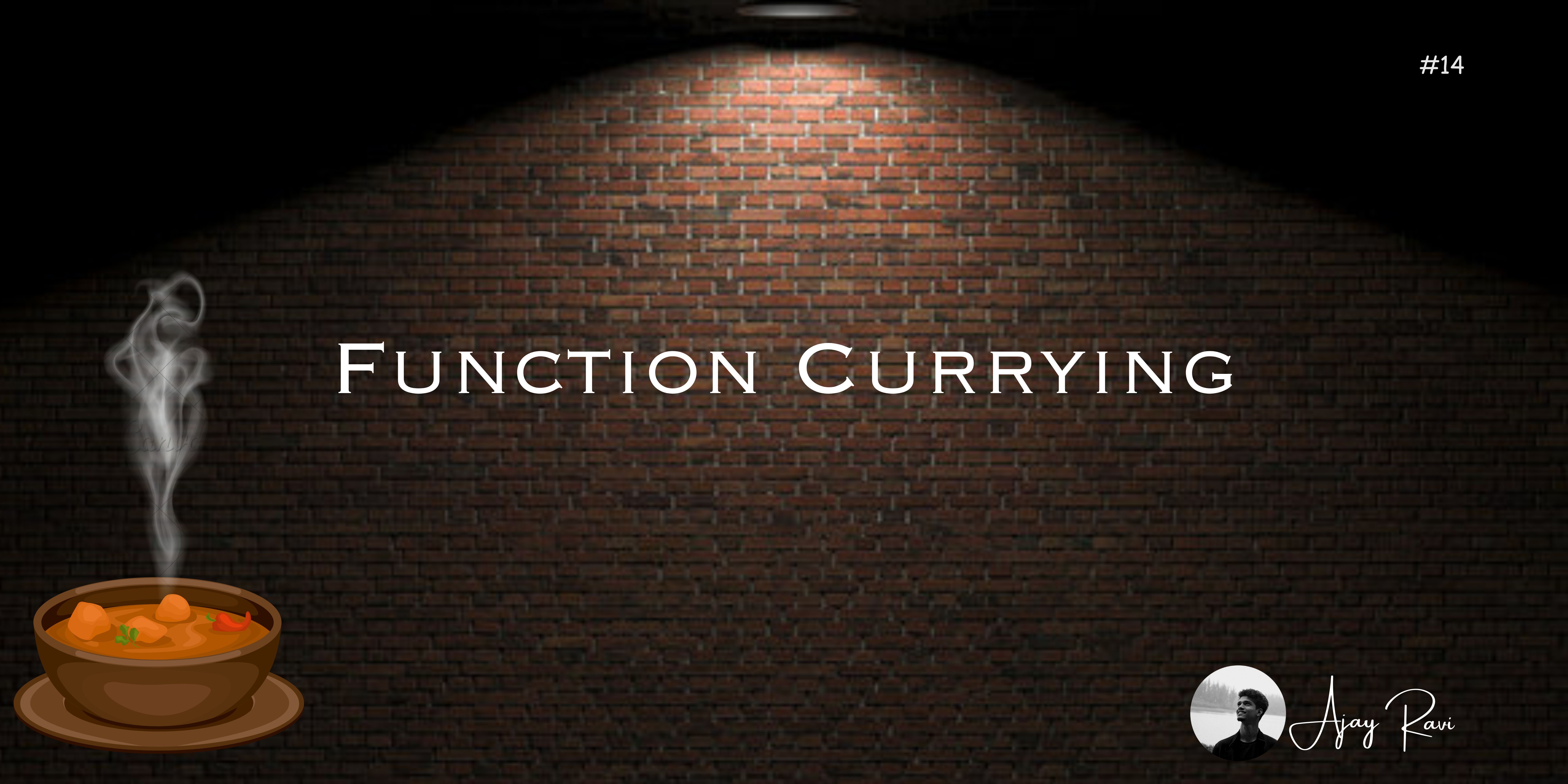Function Currying!
 Ajay Ravi
Ajay Ravi
In the world of programming, function currying stands as a powerful technique that enhances code readability, reusability, and maintainability. This article explores what function currying is, why it's used, its relationship with closures, and provides detailed code examples to help you grasp its concepts effectively.
Understanding Function Currying: Function currying involves transforming a function that takes multiple arguments into a sequence of functions, each taking a single argument. This technique offers several advantages:
Partial Application: Curried functions enable partial application, where you can fix a subset of arguments and generate a new function with the remaining placeholders.
Reusability: Currying promotes code reuse by creating specialized functions with pre-set parameters.
Readability: Curried functions break down complex logic into a series of smaller, more manageable functions.
Relation to Closures: Closures and currying are closely linked concepts. Currying often relies on closures to capture and store values within the generated functions. This connection allows curried functions to remember the fixed arguments throughout their execution.
Code Example: Let's dive into a code example to illustrate the concept. Consider a function that calculates the total cost based on a base price, tax rate, and discount:
function calculateTotal(basePrice) {
return function(taxRate) {
return function(discount) {
return basePrice * (1 + taxRate) - discount;
};
};
}
const total = calculateTotal(100)(0.1)(20);
console.log(total); // Output: 90
In this example, the calculateTotal function is curried. By fixing the base price, tax rate, and discount step by step, we obtain the final calculated total.
Practical Use Cases: Currying is beneficial in scenarios like validation, logging, and configuration. It allows you to generate specialized functions tailored to specific contexts.
Conclusion: Function currying brings elegance and efficiency to your codebase. It fosters reusability, readability, and modularization. Its close relationship with closures enhances its capabilities. Armed with this understanding and practical examples, you're ready to leverage currying in your programming journey. Happy coding!
By embracing function currying, you unlock a new dimension of code design and optimization. Its synergy with closures creates a dynamic pairing that empowers your programming solutions. Remember, mastering currying takes practice, but the benefits it offers are well worth the effort.
Subscribe to my newsletter
Read articles from Ajay Ravi directly inside your inbox. Subscribe to the newsletter, and don't miss out.
Written by

Ajay Ravi
Ajay Ravi
Unleashing Web Development Superpowers while Diving into the Exciting Realms of Blockchain and DevOps